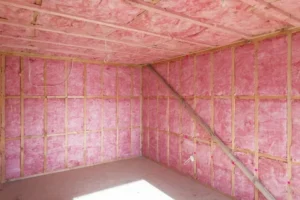Crawl Space Mold Remediation: Why Timing Matters
When it comes to crawl space mold remediation, timing is everything. Mold can start growing within 24 to 48 hours under ideal conditions, and a delay in action often results in widespread contamination, costly structural repairs, and ongoing health risks. Early detection and immediate intervention significantly minimize these threats.
Fast action reduces the overall remediation scope, protects indoor air quality, and preserves the structural integrity of your property. This guide provides a comprehensive, clear breakdown of why acting quickly is essential, the stages of remediation, and what factors to evaluate before making critical decisions.
Understanding Mold Growth in Crawl Spaces
Mold thrives in dark, moist environments where organic materials are present. Crawl spaces often meet all three conditions. Without proper ventilation, water intrusion management, or humidity control, mold colonies can spread across wooden joists, insulation, and even the home’s subflooring.
Conditions Favoring Mold Growth
| Condition | Optimal Range | Effect on Mold Growth |
| Relative Humidity | Above 60% | Encourages rapid colonization |
| Temperature | Between 70°F and 90°F | Ideal for spore reproduction |
| Food Sources | Wood, drywall, organic debris | Sustains fungal colonies |
| Air Movement | Limited ventilation | Traps moisture, stagnates air |
Bonus Tip: Install a crawl space humidity sensor to detect high moisture levels before visible mold appears.
According to the American Lung Association, exposure to mold can worsen asthma symptoms and cause respiratory infections, making swift remediation vital not just for the building, but for human health.
Why Immediate Action is Critical
- Prevents Structural Deterioration: Mold consumes cellulose in wood, weakening beams, joists, and supports.
- Reduces Health Hazards: Airborne mold spores can enter living spaces, triggering allergies, asthma attacks, and skin irritations.
- Limits Spread: Early containment and cleaning stop mold before it reaches HVAC systems, insulation, and main living areas.
- Controls Costs: Small, localized outbreaks are far less expensive to remediate than infestations spanning the entire crawl space.
- Protects Property Value: Homes with verified mold problems often suffer price reductions of 20% to 37%, according to a 2023 study from the National Association of Realtors.
Crawl Space Mold Remediation Process
Effective remediation involves a systematic, thorough approach combining cleaning, structural repair, and preventive strategies.
Step 1: Assessment and Inspection
Qualified professionals:
- Measure humidity levels.
- Identify water intrusion sources.
- Map mold colonies with infrared cameras.
- Collect air and surface samples for lab analysis if needed.
Step 2: Containment Setup
Plastic sheeting walls, floor-to-ceiling barriers, and negative air pressure machines isolate contaminated zones, preventing cross-contamination into clean spaces.
Step 3: Mold Removal and Cleaning
- HEPA vacuuming removes loose spores.
- Manual scrubbing with antimicrobial agents kills visible mold.
- Severely compromised materials, such as rotted wood or mold-saturated insulation, are removed.
Step 4: Drying and Dehumidification
Industrial-grade air movers and commercial dehumidifiers dry the structure to under 50% relative humidity, halting mold reproduction.
Step 5: Repairs and Preventive Measures
After mold is eliminated:
- Vapor barriers are installed.
- Damaged wood may be replaced or encapsulated.
- Drainage systems, sump pumps, or dehumidifiers are often recommended for future protection.
Technical Specifications and Equipment
| Equipment/Material | Specification/Role |
| HEPA Vacuums | Capture particles as small as 0.3 microns |
| Antimicrobial Solutions | EPA-registered fungicides |
| Dehumidifiers | Capable of maintaining <50% RH |
| Vapor Barriers | Minimum 10-mil polyethylene |
| Negative Air Machines | >500 CFM airflow with HEPA filters |
Bonus Tip: Ask for a post-remediation verification test to confirm success before final payment.
Timing vs Cost Comparison
| Timing of Remediation | Estimated Cost (USD) | Key Details |
| Immediate (Within 1 Week) | $500 – $2,000 | Limited mold, minimal repairs |
| Moderate Delay (1-3 Months) | $3,000 – $6,000 | Larger spread, material replacements needed |
| Extensive Delay (6+ Months) | $7,000 – $15,000+ | Full structural rebuild, systemic contamination |
Delays in action can escalate remediation costs by 300% or more over the initial cost of early intervention.
Things to Consider Before Making a Decision
Before proceeding with remediation, evaluate these critical factors to ensure informed decision-making:
Extent of the Infestation
- Small patches (<10 square feet) may be manageable with localized efforts.
- Widespread growth across multiple joists, insulation, or subflooring requires professional intervention.
Source of Moisture
Identify the moisture problem fueling mold growth:
- Leaking pipes
- Poor external drainage
- Groundwater seepage
- HVAC condensation
Resolving moisture sources is non-negotiable to prevent recurrence.
Contractor Credentials
Prioritize:
- IICRC or NORMI certification.
- Proven experience in crawl space environments.
- Insurance coverage, including mold-specific liabilities.
Bonus Tip: Request references and verification of prior successful projects.
Intended Property Use
- For homeowners: Protect long-term structural integrity.
- For sellers: Mold presence must be disclosed; remediation ensures better marketability.
- For landlords: Protect tenant health and minimize legal liabilities.
Financial Planning
Ensure clarity on total remediation costs, ongoing maintenance expenses, and future-proofing investments like permanent dehumidification systems.
Common Questions About Crawl Space Mold Remediation
Is it safe to stay in the house during crawl space mold remediation?
Typically, yes, if containment measures are properly installed. For sensitive individuals, temporary relocation may be advisable during major remediation efforts.
Can bleach kill crawl space mold?
Bleach is ineffective on porous materials like wood where mold roots penetrate. Professional-grade antimicrobial agents are necessary for full eradication.
How long will a remediated crawl space stay mold-free?
If moisture control is maintained and preventive barriers are installed, the crawl space can remain mold-free indefinitely.
Should I encapsulate my crawl space after mold remediation?
Yes, encapsulation seals the environment, regulates humidity, and provides the highest level of protection against future mold growth.
What happens if crawl space mold is left untreated?
Untreated mold compromises structural elements, invades air ducts, degrades insulation, and significantly impacts air quality throughout the home.
Make the Right Decision
Timing is the most decisive factor when addressing crawl space mold. Immediate action minimizes health risks, lowers repair costs, and preserves property value. Mold remediation must go beyond surface cleaning—identifying moisture sources, applying certified processes, and implementing lasting preventative measures are critical steps.
Evaluate your situation carefully, prioritize early intervention, and work with qualified professionals to ensure your crawl space remains dry, safe, and mold-free for the long term.
Crawl Space Mold Remediation: Why Timing Matters FAQ
How fast does mold damage occur in a crawl space?
Significant structural weakening can occur within weeks if mold growth is aggressive and moisture remains unchecked.
Why is mold worse in humid regions?
Humidity acts as a continuous fuel for mold colonies, enabling faster spread and greater density in damp climates.
Are all molds dangerous?
Not all molds are toxic, but even non-toxic species can trigger respiratory issues and allergic reactions in sensitive individuals.
Can a crawl space be mold-proofed?
While complete prevention is impossible, encapsulation, drainage improvements, and dehumidification drastically lower the risk of future mold outbreaks.
What certifications should a remediation company hold?
Look for IICRC (Institute of Inspection, Cleaning and Restoration Certification) or NORMI (National Organization of Remediators and Mold Inspectors) credentials.













